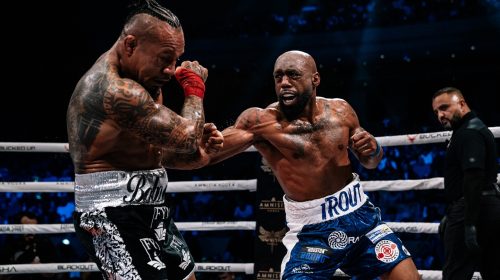
UFC Performance Institute publishes groundbreaking MMA analysis
UFC Performance Institute releases MMA analysis
Comprehensive New Study Examines More than 30,000 Performance Metrics and Data Points to Reveal Best Way to Train and Prepare for Mixed Martial Arts Competition
Las Vegas, Nev. – To mark its first year of operation, the UFC Performance Institute today unveiled the first-ever comprehensive study of the sport of MMA as published in a new 80-page journal entitled A Cross-Sectional Performance Analysis and Projection of the UFC Athlete.
Part analytics and part educational, the journal represents 12-months of initial findings from working with world-class UFC Ò fighters. Since opening its doors in May 2017, the UFC Performance Institute has worked with hundreds of UFC athletes, allowing staff to collect and analyze over 30,000 performance metrics and data points, while also working alongside coaches and athletes to develop philosophies and beliefs around the best way to train and prepare for the sport of MMA.
“Our ambition to evolve the sport of MMA can only truly be achieved when we share information outside of our facility in Las Vegas,” said James Kimball, Vice President, Operations, UFC Performance Institute. “We exist to serve the entire global UFC roster, and the dissemination of this journal is our strongest such effort to date. The scale of research and data that composes this review is the first of its kind, and though we believe it will be immensely valuable for fighters and coaches alike, we hope that it is only the starting point of a wider dialogue within the sport.”
“We are excited to share this information with the whole MMA community because it’s unique,” said Dr. Duncan French, Vice President of Performance, UFC Performance Institute. “It represents the first-time comprehensive information has been presented on such a large sample of world-class UFC fighters, detailing critical aspects of performance, injury prevention, and physical preparation. We hope it will support athletes and coaches to be more intentional in the way they prepare and compete in the future. The UFC Performance Paradigm is our blueprint for success.”
Note: A copy of the full journal, a summary one sheet, and a chart representing the UFC Performance Paradigm can all be downloaded here: UFC PI Journal.
Some key takeaways from the UFC Performance Institute study:
WINNING IN TODAY’S UFC
Data analytics have been conducted on over 3,900 UFC bouts since 2002 in an effort to define ‘What it Takes to Win’ in today’s UFC.
In 16 years since 2002, fight duration has increased 32.2%, with the average bout duration now 10:43min.
Heavyweights have the shortest bout duration (8:02min), while strawweights have the longest (12:35min).
60.1% of heavyweight fights are won by KO/TKO while 60.3% of men’s flyweight fights go to decision.
Middleweight has the most even distribution of win methods (38.2% KO/TKO; 22.9% Sub; 38.9% decision).
Rear naked choke is the most common submission finish followed by guillotine.
Average strikes attempted/min (8.5) have doubled in the past 16 years and continue to trend upwards.
Women’s bantamweight (8.87) and strawweight (8.9) have the highest strike frequency/min in UFC.
MAINTAINING HEALTHY ATHLETES AND REDUCING INJURIES
Striking techniques have the highest injury risk by frequency, accounting for 36.5% of all injury mechanisms.
Take-downs and grappling have the highest injury severity risk in terms of average injury duration (112 and 129 days, respectively).
The top five most common injuries in fights are to the head/face (77.8%), wrist/hand (19.5%), knee (15.6%), foot (10.7%) and shoulder (9.7%).
The most common injuries in training are knee (37%), shoulder (18.5%), wrist/hand (14.8%), neck (7.4%), forearm (7.4%).
Collectively, the top five areas of injury in UFC are: head, knee, wrist/hand, shoulder and foot.
PHYSICAL PERFORMANCE BENCHMARKS OF UFC ATHLETES
Light heavyweights have the highest performance standards for lower body power, with an average vertical jump height of 23.8” (60.51cm).
Men’s featherweights have the highest relative strength (force/bodyweight) within UFC (3.8 x bodyweight).
Desired maximal isometric strength levels are >3.5 x Bodyweight.
Maximal aerobic capacity (VO2max) for female UFC athletes is on average 54-60ml/kg/min. For male UFC athletes, the average is 58-66ml/kg/min.
METABOLIC HEALTH THROUGH PERIODIZED PERFORMANCE NUTRITION
Recommended fight night weight ≤10% of contracted weight class.
No more than 1.5% weight loss from fat per week, so weight descents should be less severe than this.


























